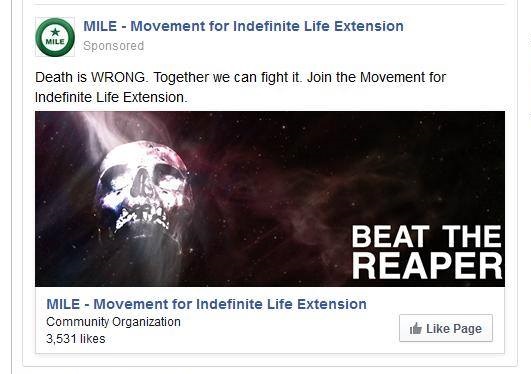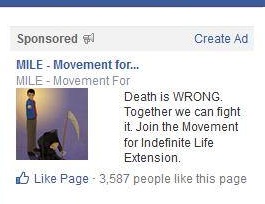Heterogeneity: A Capital Idea! – Article by Sanford Ikeda

When Thomas Piketty’s Capital in the 21st Century was released in English earlier this year it sparked vigorous debate on the issue of wealth inequality. Despite the prominence of the word in the title, however, capital has not itself become a hot topic. Apparently none of his defenders have taken the opportunity to explore capital theory, and, with a few exceptions, neither have his critics.
To prepare to read Mr. Piketty’s book I’ve been studying Ludwig Lachmann’s Capital and Its Structure, which, along with Israel M. Kirzner’s Essay on Capital, is among the clearest expositions of Austrian capital theory around. A hundred years ago the “Austrian economists”—i.e. scholars such as Eugen von Böhm-Bawerk who worked in the tradition of Carl Menger—were renowned for their contributions to the theory of capital. Today capital theory is still an essential part of modern Austrian economics, but few others delve into its complexities. Why bother?
Capital is Heterogeneous
Among the Austrians, Böhm-Bawerk viewed capital as “produced means of production” and for Ludwig von Mises “capital goods are intermediary steps on the way toward a definite goal.” (Israel Kirzner uses the metaphor of a “half-baked cake.”) Lachmann then places capital goods in the context of a person’s plan: “production plans are the primary object of the theory of capital.” You can combine capital goods in only a limited number of ways within a particular plan. Capital goods then aren’t perfect substitutes for one another. Capital is heterogeneous.
Now, mainstream economics treats capital as a homogenous glob. For instance, both micro- and macroeconomists typically assume Output (Q) is a mathematical function of several factor inputs, e.g. Labor (L) and Capital (K) or
Q = f(L,K).
In this function, not only is output homogenous (whether we’re talking about ball-bearings produced by one firm or all the goods produced by all firms in an economy) but so are all labor inputs and all capital inputs used to produce them. In particular, any capital good can substitute perfectly for any other capital good in a firm or across all firms. A hammer can perfectly replace, say, a helicopter or even a harbor.
On the other hand, capital heterogeneity implies several things.
First, according to Mises, heterogeneity means that, “All capital goods have a more or less specific character.” A capital good can’t be used for just any purpose: A hammer generally can’t be used as a harbor. Second, to make a capital good productive a person needs to combine it with other capital goods in ways that are complementary within her plan: Hammers and harbors could be used together to help repair a boat. And third, heterogeneity means that capital goods have no common unit of measurement, which poses a problem if you want to add up how much capital you have: One tractor plus two computers plus three nails doesn’t give you “six units” of capital.
Isn’t “money capital” homogeneous? The monetary equivalent of one’s stock of capital, say $50,000, may be useful for accounting purposes, but that sum isn’t itself a combination of capital goods in a production process. If you want to buy $50,000 worth of capital you don’t go to the store and order “Six units of capital please!” Instead, you buy specific units of capital according to your business plan.
At first blush it might seem that labor is also heterogeneous. After all, you can’t substitute a chemical engineer for a pediatrician, can you? But in economics we differentiate between pure “labor” from the specific skills and know-how a person possesses. Take those away—what we call “human capital”—and then indeed one unit of labor could substitute for any other. The same goes for other inputs such as land. What prevents an input from substituting for another, other than distance in time and space, is precisely its capital character.
One more thing. We’re talking about the subjective not the objective properties of a capital good. That is, what makes an object a hammer and not something else is the use to which you put it. That means that physical heterogeneity is not the point, but rather heterogeneity in use. As Lachmann puts it, “Even in a building which consisted of stones completely alike these stones would have different functions.” Some stones serve as wall elements, others as foundation, etc. By the same token, physically dissimilar capital goods might be substitutes for each other. A chair might sometimes also make a good stepladder.
But, again, what practical difference does it make whether we treat capital as heterogeneous or homogenous? Here, briefly, are a few consequences.
Investment Capital and Income Flows
When economists talk about “returns to capital” they often do so as if income “flows” automatically from an investment in capital goods. As Lachmann says:
In most of the theories currently in fashion economic progress is apparently regarded as the automatic outcome of capital investment, “autonomous” or otherwise. Perhaps we should not be surprised at this fact: mechanistic theories are bound to produce results that look automatic.
But if capital goods are heterogeneous, then whether or not you earn an income from them depends crucially on what kinds of capital goods you buy and exactly how you combine them, and in turn how that combination has to complement the combinations that others have put together. You build an office-cleaning business in the hopes that someone else has built an office to clean.
There’s nothing automatic about it; error is always a possibility. Which brings up another implication.
Entrepreneurship
Lachmann:
We are living in a world of unexpected change; hence capital combinations, and with them the capital structure, will be ever changing, will be dissolved and re-formed. In this activity we find the real function of the entrepreneur.
We don’t invest blindly. We combine capital goods using, among other things, the prices of inputs and outputs that we note from the past and the prices of those things we expect to see in the future. Again, it’s not automatic. It takes entrepreneurship, including awareness and vision. But in the real world—a world very different from the models of too many economists—unexpected change happens. And when it happens the entrepreneur has to adjust appropriately, otherwise the usefulness of her capital combinations evaporates. But that’s the strength of the market process.
A progressive economy is not an economy in which no capital is ever lost, but an economy which can afford to lose capital because the productive opportunities revealed by the loss are vigorously exploited.
In a dynamic economy, entrepreneurs are able to recombine capital goods to create value faster than it disappears.
Stimulus Spending
As the economist Roger Garrison notes, Keynes’s macroeconomics is based on labor, not capital. And when capital does enter his analysis Keynes regarded it the same way as mainstream economics: as a homogeneous glob.
Thus modern Keynesians, such as Paul Krugman, want to cure recessions by government “stimulus” spending, without much or any regard to what it is spent on, whether hammers or harbors. (Here is just one example.) But the solution to a recession is not to indiscriminately increase overall spending. The solution is to enable people to use their local knowledge to invest in capital goods that complement existing capital combinations, within what Lachmann calls the capital structure, in a way that will satisfy actual demand. (That is why economist Robert Higgs emphasizes “real net private business investment” as an important indicator of economic activity.) The government doesn’t know what those combinations are, only local entrepreneurs know, but its spending patterns certainly can and do prevent the right capital structures from emerging.
Finally, no one can usefully analyze the real world without abstracting from it. It’s a necessary tradeoff. For some purposes smoothing the heterogeneity out of capital may be helpful. Too often though the cost is just too high.


















